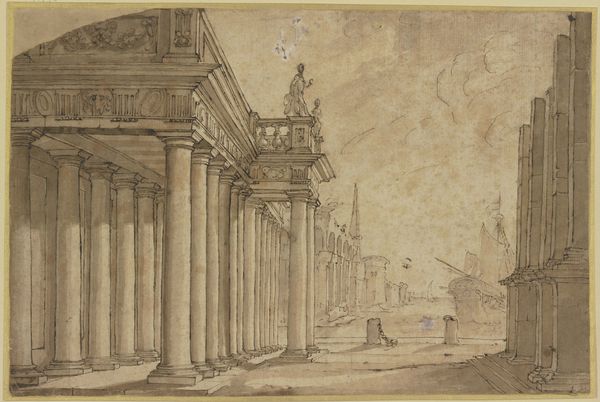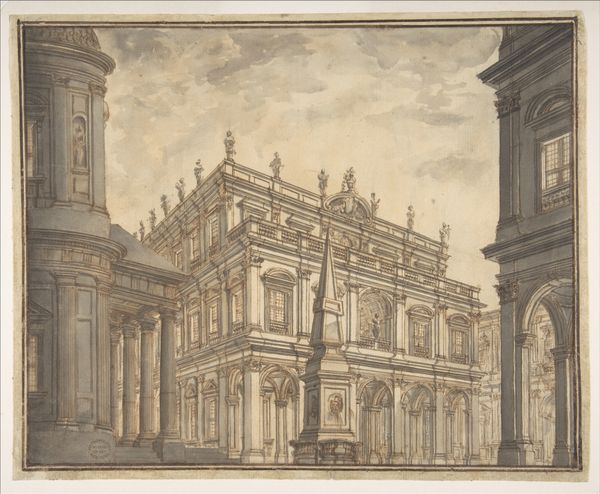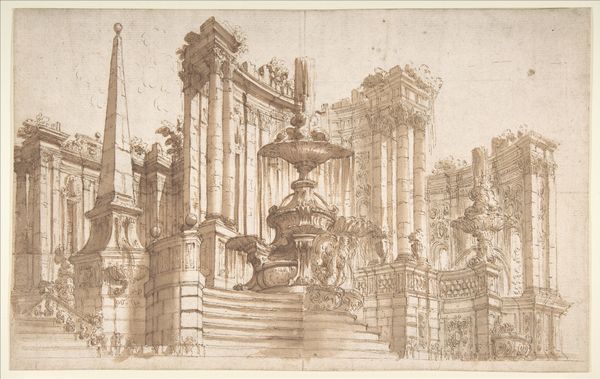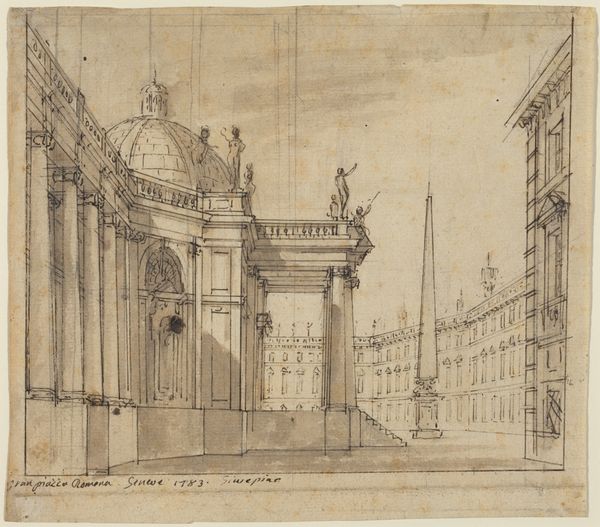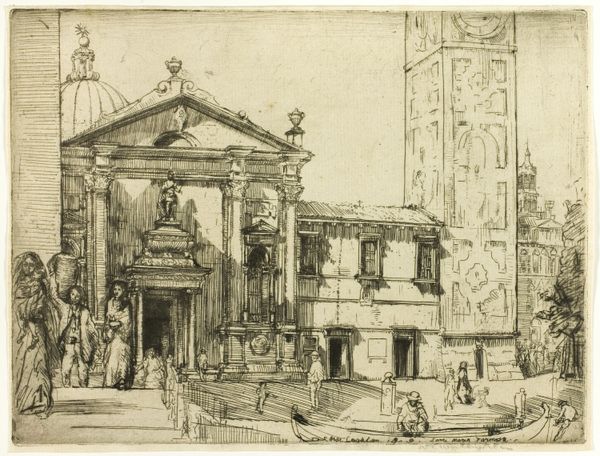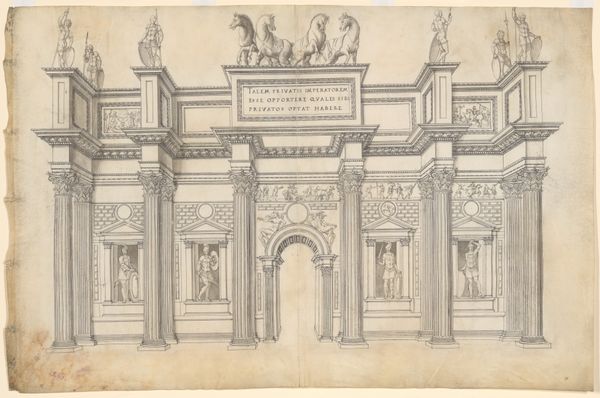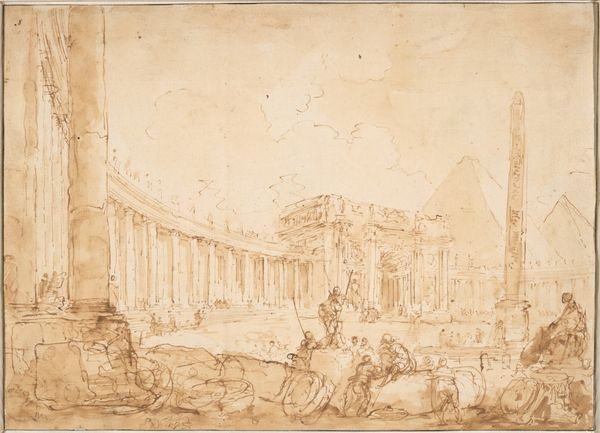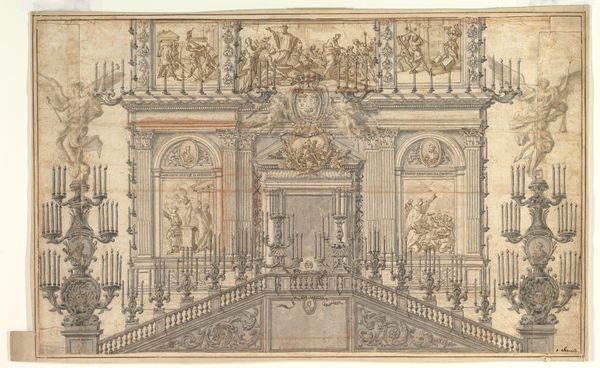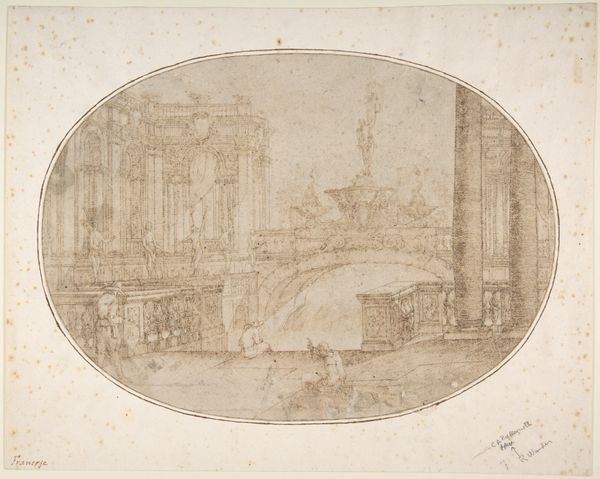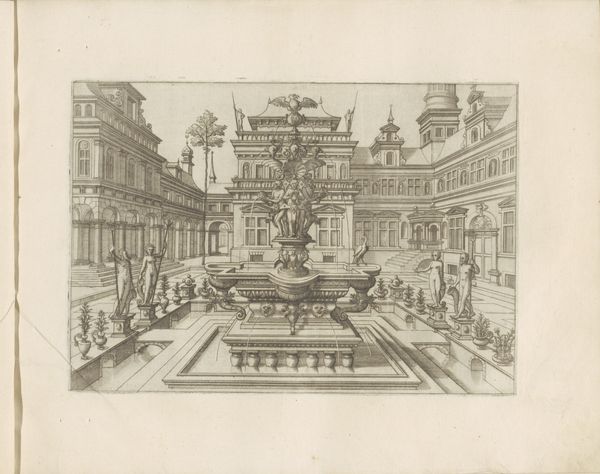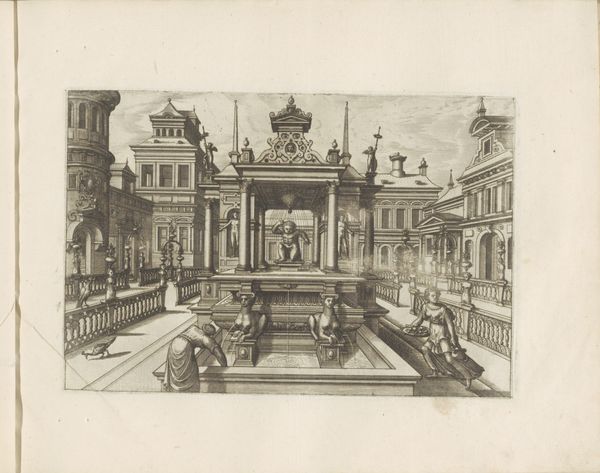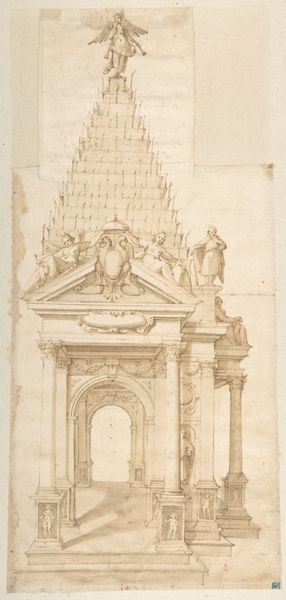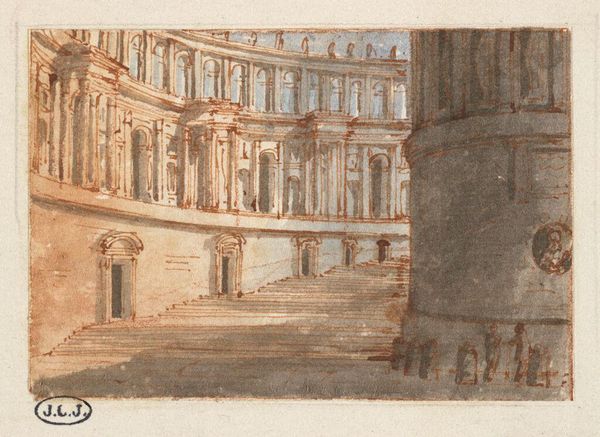
drawing, paper, ink, architecture
#
drawing
#
baroque
#
paper
#
ink
#
cityscape
#
history-painting
#
architecture
Dimensions: overall: 14.5 x 24 cm (5 11/16 x 9 7/16 in.)
Copyright: National Gallery of Art: CC0 1.0
Curator: Looking at Luigi Vanvitelli's "Proposal for the Trevi Fountain," created between 1730 and 1732, the scene is a whirlwind of ink and wash on paper, depicting a classical vision for the cityscape. Editor: My immediate reaction is…restless energy. The lines are so dynamic, capturing the fountain's potential rather than a static image. There’s a sense of unfinished power, as if the city itself is about to burst forth. Curator: That dynamism reflects the Baroque period's penchant for drama and grandeur, seen here through architecture. It is a city transformed by power! Vanvitelli sought to capture Rome’s self-image, a hub of cultural authority. It’s tied into ideas of civic pride, papal authority. Editor: But I wonder, how accessible was that vision of pride? Who was the city for, really? Projects like this often mask social inequalities, glorifying power while displacing marginalized communities. It invites us to reflect critically on who benefits from these grand, public gestures, especially today. Curator: The artistic execution demonstrates a masterful understanding of perspective. You see the deliberate use of light and shadow which helps create a sense of depth and brings attention to the architectural elements. The Trevi Fountain becomes more than a water feature. Editor: Absolutely. And if we peel back the layers, what kind of society dedicates such immense resources to ornamental structures? What does it tell us about their priorities? The drawing is a document reflecting a specific set of social values. It invites dialogue between past intentions and present values, don’t you think? Curator: A great piece invites many discussions from a number of people. We've touched on the complexities within Vanvitelli's vision; a dialogue of aesthetics, social power, and historical context. Editor: The intersectionality of it all – it's really where the meat of the piece sits, isn’t it? Thanks for taking the time to delve in.
Comments
No comments
Be the first to comment and join the conversation on the ultimate creative platform.
